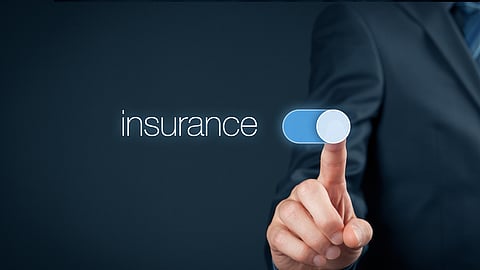

Running a business requires an entrepreneur to take several kinds of risks, and these risks often come with the possibility of financial loss. It is impossible to completely eliminate many uncertainties. However, some risks can be reduced — and in certain cases entirely avoided — when timely attention and analysis are applied. Insurance-related risks fall into this category. Every business, knowingly or unknowingly, takes on multiple risks associated with insurance. With proper planning and structured protection, future financial losses can be minimised to a significant extent.
Let us look at some of the major risks an organisation may face. The first among these is property. This includes buildings, plant and machinery, raw materials and finished goods. Most industrialists operate with loans from financial institutions. But when assets are insured only partially, instead of for their actual value, a claim will not be paid in full if a loss occurs. The first step, therefore, is to ensure that the insured amount is accurate and reflects the true reinstatement value. It is equally important to consider the past performance of the insurer, the average claim-settlement time and the quality of service. These questions should be addressed before a crisis occurs, not after.
In today’s environment, risks are increasing by the day, and businesses often face unexpected financial losses. Risk management is the process of reducing both the number of risks and the severity of impact when they occur. Although risks cannot be eliminated entirely, they can be controlled, contained and managed with the right systems in place.
Most policyholders assume they are fully protected because of what was promised during policy marketing. But this assumption may not be accurate. Policy gap analysis is the process of examining whether the current insurance policy has shortcomings, limitations, exclusions or inappropriate premium structures, and then preparing a detailed report. For those running institutions, factories and industrial units, a thorough policy gap analysis is essential to confirm that the protection they think they have actually existed.
Different businesses have different types of risks. No single policy can cover all exposures. A major reason many organisations remain underinsured is simply a lack of awareness. Insurance portfolio management helps corporate institutions and business groups coordinate all their insurance requirements, ensuring each major risk is addressed through a structured framework.
The customer’s premium and the risk coverage should always be placed with a reliable and well-established company. Factors to consider include the insurer’s financial strength, foreign participation, past performance, growth, marketing network and readiness to provide service. When choosing a policy, attention must be paid to the risks covered, premium rates, transparency of policy conditions, the availability of package policies, discounts and the possibility of customising coverage to suit the organisation’s needs. Trust in the company remains the most important criterion. The presence of local offices, service-oriented staff and responsive marketing teams adds further confidence.
While selecting an insurer, information such as market share, growth rate, profit-and-loss statements, operating expenses, reserves, claim history and details about foreign partners should be reviewed. Entrepreneurs should also verify whether policy issuance and claim settlement are completed within the expected timeframe or whether delays are common. Certifications from recognised rating agencies may also be considered reliable indicators of performance.
Building
A building must be insured for the amount required to construct a new one, including compound walls and gates. The insured value must reflect the reinstatement cost, not the depreciated value.
Machinery
Machinery should be insured under a normal fire insurance policy at its current reinstatement value. If insured under a machinery breakdown policy, the same reinstatement value applies. A separate fire insurance policy for machinery is essential.
Stock
The insurable value of raw materials must include the cost of procurement, transport, taxes and insurance. The insured amount for the same item may differ for wholesalers and retailers. For processed goods, manufacturing costs must be included; for finished goods, factory overheads must also be added.
Furniture, fixtures and fittings
These should be insured at depreciated value.
Electronic equipment, however, must be insured at current reinstatement value.
Personal items
Personal items are typically insured at depreciated value. Antiques and decorative objects require valuation by experts to avoid under insurance.
Fidelity Guarantee Insurance
Industrial establishments may face financial irregularities such as embezzlement of funds, cheque manipulation or misappropriation. A Fidelity Guarantee Insurance Policy protects against such risks. In businesses with many employees, coverage can be taken by occupation rather than by individual names, with predetermined coverage limits for each role.
Money Insurance Policy
This covers money stolen from safes, lost at counters or during transit between the bank and the establishment. Accurate records of who handles the cash, when and how, are essential for this protection.
{This article is originally published in the Dhanam Magazine's Nov 15,2025 edition. The author is the managing director of Aims Insurance Broking Private Limited. Phone: 98957 68333. E-mail: odatt@aimsinsurance.in}